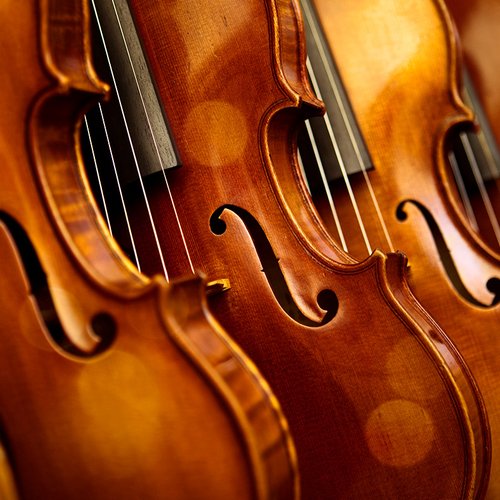Virtuoso Maxim Vengerov reveals, and plays, the five hardest violin pieces ever written
18 February 2021, 12:57 | Updated: 18 February 2021, 17:17

We asked one of the world’s great virtuosos: what are the five most difficult violin pieces of all time?
Violin virtuoso Maxim Vengerov, Classic FM’s Artist in Residence, reveals the five pieces he judges to be the trickiest ever written for the instrument.
The Grammy-winning violinist, who is one of the most in-demand soloists in all classical music, is often hailed as the greatest living string player today.
So, you know the pieces he’s chosen will be anything but painless…
Watch here: Maxim Vengerov’s exclusive at-home concert for Classic FM >

Maxim Vengerov | 5 Most Difficult Violin Pieces | Classic FM
-
Schubert Fantasy in C major (1827)
First, Vengerov names Schubert’s demanding final piece for violin and piano, which was written to display the virtuosity of the Bohemian violinist and composer, Josef Slavík.
“Already, so-called easier pieces by Schubert are fiendishly difficult in terms of phrasing,” Vengerov says. “But with the added technical difficulties of the Fantasy, [which are] often non-violinistic, you are so busy playing tough combinations of notes that structuring a convincing phrase becomes almost impossible.
“And if that weren’t enough, the endlessly long melody that starts the work in pianissimo over 14 measures, with just one tiny crescendo, is a serious challenge in bow control and division, so as not to lose tension when arching the phrase.”
Watch Vengerov play the Fantasy in full, from 1:16:20 in the video below.

Maxim Vengerov | Exclusive At-Home Concert | Classic FM Session
-
Beethoven Violin Concerto (1806)
Second on the list is Beethoven’s monumental Violin Concerto, from which Vengerov plays the magical G minor section – watch above.
“All the difficulties of this [are concerned] with the bow arm, which must remain as even as possible. So, no shaking!
“The [evolving] phrases often leave you in a less than comfortable position. But if you waiver just once, you have destroyed the phrase – simple as that.”
Vengerov also advises “finishing on a long up-bow then starting where the arm is naturally heavy” for phrasing.
-
Brahms Violin Concerto (1878)
You might ask “why?”, as Vengerov says, this is a deeply violinistic work.
“However, to play it properly, you need to know what is happening in the orchestra in order to expand the phrase where necessary, and [engage in a] dialogue with other instruments,” he says.
“Brahms often uses the soloist to crown an idea that has been introduced elsewhere.”
Watch above as Vengerov conducts a gifted young Chinese student, in a masterclass of the composer’s only violin concerto.
-
Rachmaninov ‘Vocalise’ (1915)
“The problem is in the title,” Vengerov explains. “The work was written for the phenomenal Russian soprano, Antonina Nezhdanova, in 1912.
“Jascha Heifetz prepared an arrangement for violin but didn’t change much.
“One must play the piece with a deep connection between the notes, exactly like an opera singer’s legato, continue with even vibrato, and play long, seamless phrases without hearing the bow change. It must function like a singer’s air column.”
Watch above as Vengerov plays a section of the sublime melody from Monaco, in a virtual duet with Paris-based Russian pianist Roustem Saïtkoulov, and below, as Vengerov plays it in full in his earlier years.

Maxim Vengerov - Rachmaninov - Vocalise
-
Mendelssohn Violin Concerto (1845)
Written two years before his death, this is Mendelssohn’s last large orchestral work, and “naturally the one everyone plays, and everyone loves,” Vengerov says.
“There are several approaches to playing this concerto,” he adds. “Whether it is Classical or Romantic, there is a transparency in the writing that must be like crystal and continues in the solo part.
“The difficulty is also in the development of ideas based on smaller motifs.”
Watch above as Vengerov explains the intricacies of this string masterwork.
Now you’re ready to start learning these fiendish works, here are some special practice tips from the maestro himself...

Maxim Vengerov - Top Tips For Practising Violin | Classic FM
Click here to watch Maxim Vengerov’s exclusive violin masterclass videos for Classic FM.

























